In a world defined by rapid technological shifts, complex financial products, and economic uncertainty, the ability to manage personal finances is no longer an optional life skill—it is a critical necessity. Financial literacy, often overlooked in standard education systems, is the bedrock upon which a secure, independent, and stress-free life is built. It’s more than just knowing how to balance a checkbook; it’s about mastering the language of money to navigate the daily decisions that shape our future.
This article delves into the profound, often underestimated, importance of financial education in everyday life, establishing it as the single most critical investment an individual can make in their own well-being.
The Daily Dialogue with Money: From Transaction to Strategy
Our relationship with money is a constant, daily dialogue. Every swipe of a card, every subscription renewal, every decision to save or spend is a financial transaction. Without education, these transactions are purely reactive. With financial literacy, they transform into proactive steps toward a larger, well-defined strategy.
1. Mastering the Budget: The Blueprint for Control
At its core, financial education begins with budgeting. Many view budgeting as restrictive, a form of self-deprivation. However, the financially educated understand it as an empowering tool—a monthly blueprint that grants permission to spend by first ensuring essential needs and savings goals are met.
In everyday life, a budget is the difference between living paycheck-to-paycheck and having a buffer. It reveals hidden expenses (the “latte factor”), clarifies spending priorities, and, crucially, establishes the margin needed to weather minor financial storms. It shifts the mindset from “Where did my money go?” to “I know exactly where my money is working.”
2. The Debt Dilemma: Unmasking the True Cost
The modern economy is built on credit, making debt almost unavoidable. Financial education provides the critical intelligence to manage this reality. It teaches the difference between “good debt” (like a mortgage or student loan that potentially increases net worth or earning capacity) and “bad debt” (high-interest consumer debt like credit cards).
The lack of this knowledge is a primary driver of financial stress. Everyday life is constantly affected by high-interest debt, which can act as a financial anchor, pulling down one’s wealth with punitive interest rates. Financial literacy equips individuals to understand Annual Percentage Rates (APR), the power of compound interest against them, and the most effective strategies for debt repayment—such as the “snowball” or “avalanche” methods. This knowledge is not theoretical; it directly translates into thousands of dollars saved and years of financial freedom gained.
Building the Shield: Security and Resilience
Life is inherently unpredictable. Financial education is the construction of a robust shield against the unexpected, transforming vulnerability into resilience.
3. The Emergency Fund: Your Personal Insurance
One of the cornerstones of financial stability taught through education is the emergency fund. This liquid safety net, typically three to six months’ worth of living expenses, is a critical buffer against job loss, unexpected medical bills, or major car repairs.
In the daily grind, knowing this fund exists dramatically reduces stress and prevents a sudden emergency from spiraling into a financial crisis that requires taking on high-interest debt. The simplicity of this concept belies its profound psychological and economic impact. It’s the peace of mind that allows for sound decision-making, rather than panic.
4. Navigating Credit: The Invisible Score that Rules Decisions
In the modern financial landscape, a credit score is a silent, but powerful, determinant of one’s quality of life. Financial education demystifies this number, explaining its components: payment history, amounts owed, length of credit history, new credit, and credit mix.
Everyday decisions, from renting an apartment to getting a favorable rate on a car loan or even obtaining competitive insurance premiums, are influenced by this score. A financially literate individual understands that paying bills on time, keeping credit utilization low, and regularly checking their credit report are not just good habits—they are strategic moves that save significant money over a lifetime.
The Long Game: Securing the Future
While daily finance is about managing the present, financial education’s most profound impact is on securing the distant future, primarily through retirement planning and investment.
5. Decoding Investment: Making Money Work for You
For many, investment is intimidating, shrouded in jargon and perceived as something only for the wealthy. Financial education breaks down this barrier. It teaches the fundamental principle of compounding—the concept that your earnings also earn money, accelerating wealth accumulation over time.
It introduces everyday individuals to accessible vehicles like 401(k)s, IRAs, and low-cost index funds. The lesson here is clear: the most important factor in long-term wealth is not timing the market, but time in the market. Starting early, even with small amounts, leverages the power of compounding to build substantial future wealth. This knowledge turns passive savings into active wealth generation.
6. Protection and Planning: Insurance and Estate Basics
Financial education extends beyond banking and investing to critical protective measures. It helps individuals understand the necessity of various insurance policies—health, life, disability, and property—to manage catastrophic risks that could otherwise wipe out decades of savings.
Furthermore, it introduces the importance of basic estate planning, ensuring that one’s assets and wishes are handled correctly, providing a final layer of responsibility and care for loved ones. While perhaps not a daily concern, the periodic review and maintenance of these plans are essential tasks of a financially educated life.
The Societal and Psychological Dividend
Beyond the individual bottom line, financial literacy has a powerful societal and psychological impact.
Reduced Financial Stress: Money is a leading cause of stress and marital strain. Financial education provides a sense of control, which is the most potent antidote to anxiety. Knowing where you stand and having a plan dramatically improves mental health and overall well-being.
Protection Against Fraud: In the digital age, financial scams are rampant. A financially savvy individual is better equipped to spot red flags, understand complex schemes, and avoid becoming a victim of fraud or predatory lending practices.
Informed Citizenship: A population with a strong grasp of financial principles is better able to understand economic policy, engage in informed civic dialogue, and make responsible choices that affect the broader economy.
Conclusion
The importance of financial education in everyday life cannot be overstated. It is the silent prerequisite for a successful life in the 21st century. It is the tool that transforms a reactive spender into a proactive investor, a burdened debtor into a financially free individual.
It is a lifelong journey, requiring continuous learning and application. Yet, the returns—measured in reduced stress, greater independence, and a secure future—are exponentially greater than the initial investment of time and effort. By embracing financial education, individuals are not just managing money; they are investing in their future selves, building an unshakeable foundation for true independence and prosperity.



